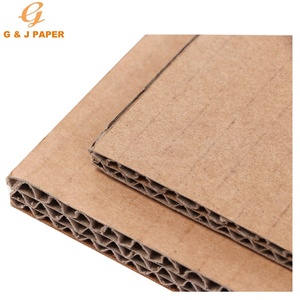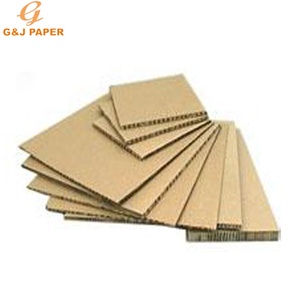
All categories
Featured selections
Trade Assurance
Buyer Central
Help Center
Get the app
Become a supplier

(16004 products available)














































A carton wrapper comes in different types to suit diverse packaging needs. These frequently used carton wrapper types have proven effective.
Flow wrappers
Flow wrappers are also known as intermitten motion or flow pack wrappers. They pack products in a thermoplastic film and seal the wrap through flow dynamics using electric or microwave sealing. Typically, flow wrappers use an automatic feeding conveyor belt that supplies products in the same flow direction as the film. Once the products arrive at the film area, a pusher plate or tailgate shears the items at their respective product trays. The film then wraps the item before sealing occurs. This wrapper is an excellent choice for businesses looking for high-speed packaging solutions. Its ability to accommodate diverse product shapes and sizes makes it an attractive investment.
Carton sealing machine
This is another popular carton wrapper. It can also be designed as an automatic or semi-automatic wrapper, depending on what the user needs. As the name implies, a carton sealing machine wraps and seals a carton without much input from the machine operator. Depending on what the user chooses, they might find machines that use pressure-sensitive tape stands, hot-melt adhesive solutions, or both to seal the carton. This type of wrapper is efficient for businesses that package a high volume of products.
Carton packers and dividers
Carton packers and dividers help businesses efficiently organize their products into cartons. They then use the dividers to create multiple sections within a single carton. This is excellent for aggregating smaller products or creating sample packs. The dividers come in handy when trying to prevent different items from mingling. The best part is that the packers and dividers are customizable to suit different product shapes and sizes.
Strapping machine
Using polyproplyene or polyester strap, the strapping machine puts a strap around the carton and tightens the strap. Then heat sealer, friction, buckle, or electromagnetic clasps secure the strap. The strapping machine is efficient and cost-effective.
Modular packaging systems
Modular packaging systems are great for businesses searching for adaptable packaging solutions. They offer lots of flexibility and scalability by employing modular components that may be easily adjusted or added to fit various packaging requirements.
These are some important carton packaging machine specifications and their maintenance requirements:
Carton wrappers are packaging machines used to wrap products in cartons. They enable quick, precise, and efficient packing, thereby helping to protect products during transportation and storage. Various industries use carton wrappers.
Food and Beverage
Carton wrappers packaged in shrink-wrapped cartons represent one of the most prevalent uses of carton wrappers in food and beverage production. Mead Johnson Nutrition, which manufactures powdered milk for children, is familiar with this scenario. Milk is delicate, and its packaging must withstand impacts. A carton is more than just a container; there is an inner bag that protects the contents from contamination, leakage, and spoilage.
Automation is an essential part of the process that wraps a tray of bottles for doctors. The bottle tray is picked up by robots and placed into a carton wrapper that produces a carton out of a flat sheet, which is then loaded with bottles, non-necessary containers, and boxes. A shrink tunnel is used for shrink wrapping.
The carton is the last part of the protective packaging required to hold dairy products. In this situation, the carton wrapper increases productivity by using robotics and machines more than manual labor.
Cosmetics and Personal Care
Cosmetics and personal care items, such as shampoo bottles and detergent containers, are often handled using horizontal carton wrappers. Because they firmly wrap around valuable things, horizontal wrappers guarantee that products unyielding to a wider degree of demands are maintained underneath protective layers of boxes that include details about goods, usage, and more.
When intelligent packaging (Internet of Things) is integrated with Intelligent Carton Wrappers, even more possibilities open. With up-to-the-minute product information and stock availability accessible right there on the shelf, shoppers will be able to know everything about the products, including when they will be in stores and when they will expire. More interaction will occur, and more information and data will be collected, all of which will pave the way for artificial intelligence (AI) to provide shopping and customer experience in the future.
Pharmaceuticals
For pharmaceutical products that require additional visibility and security in their wrapping, vertical carton wrappers are typically the preferred choice. These machines provide a rapid and uncomplicated method to enclose products like blister packs and bottles within cartons. The packaging is further protected and more accessible to trace thanks to features like child-safe drug cartons and track-and-trace technology.
Pharmaceutical products are also traceable using intelligent technology. When there are alerts and more information on precisely where a product has been at every step of the way by the \"carton as an information holder,\" it can become useful to know when and where the product was shipped. Wrapping information in a carton can help in supply chain management.
Consider product compatibility:
Before choosing a carton wrapper, it is essential to consider product compatibility. Various packaging methods are available, and not all are suitable for specific products. For example, a cling-film carton wrapper might not be the best choice for unique, high-end products that require a more sophisticated presentation. Similarly, a coated-paper carton wrapper may not be suitable for fragile products that need extra protection. Take the time to research and select a carton wrapper that complements the product, enhances its visibility, and meets packaging requirements.
Focus on branding opportunities:
When choosing a carton wrapper, one should prioritize the ability to showcase a brand. In today's competitive market, effective branding is essential for standing out and attracting customers. A well-designed carton wrapper can serve as a powerful tool for communicating brand values, creating an emotional connection with consumers, and differentiating products from the competition. Opt for carton wrappers that offer ample space for eye-catching graphics, logos, and messaging. Consider customizable options that allow for distinct designs, ensuring the packaging reflects the brand's identity and resonates with the target audience.
Assess cost-effectiveness:
When choosing a carton wrapper, it is essential to assess its cost-effectiveness. Packaging plays a crucial role in attracting customers and influencing purchasing decisions, but it should aligns with budget constraints and profit margins. Evaluate the carton wrapper's material, printing options, and customization features against the potential return on investment. Consider the target market and product positioning to determine an appropriate packaging spend. Look for options that provide the desired visual impact and brand experience without straining financial resources. Balancing packaging quality, aesthetic appeal, and affordability is crucial for making a profitable business decision.
Q1: How flexible is a carton wrapper machine in terms of packaging different products?
A1: Carton wrapper machines are designed to be adaptable. With changeable settings and features, they can package various products, shapes, and sizes.
Q2: Does a carton wrapper machine affect the speed of a packaging line?
A2: Yes, using a carton wrapper machine can increase packaging line speed. Faster than manual wrapping, automated wrapping improves efficiency and output.
Q3: What maintenance does a carton wrapper machine require?
A3: Routine maintenance includes inspecting and lubricating components, replacing worn parts, and periodic cleaning. Assured longevity and performance consistent with regular maintenance.
Q4: Can a carton wrapper machine be integrated with other packaging equipment?
A4: Yes, carton wrapper machines can be integrated into complete packaging systems together with fillers, conveyors, and sealers, for instance, to automate the entire packaging process.